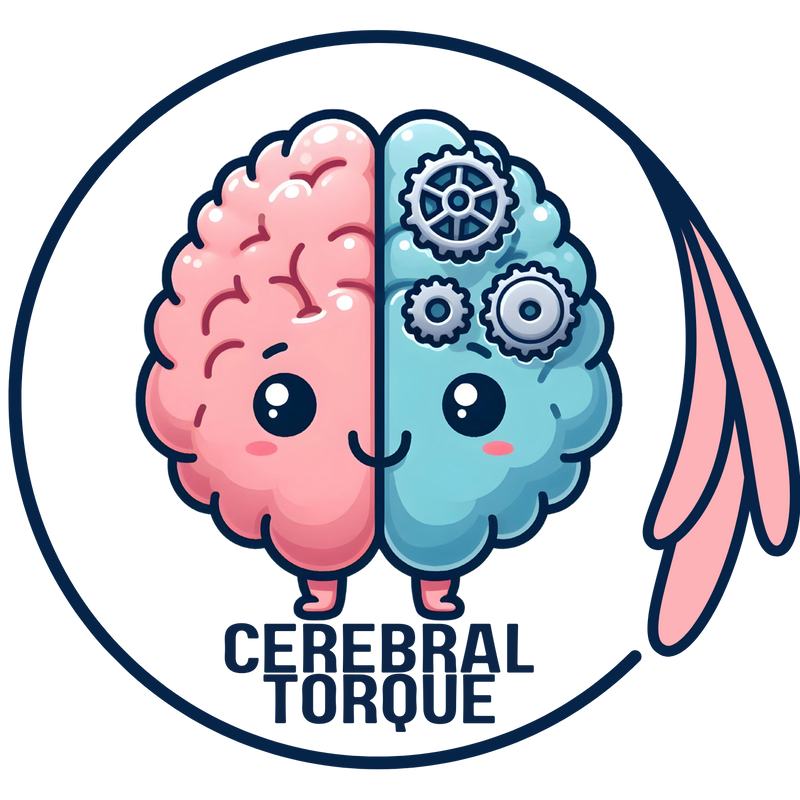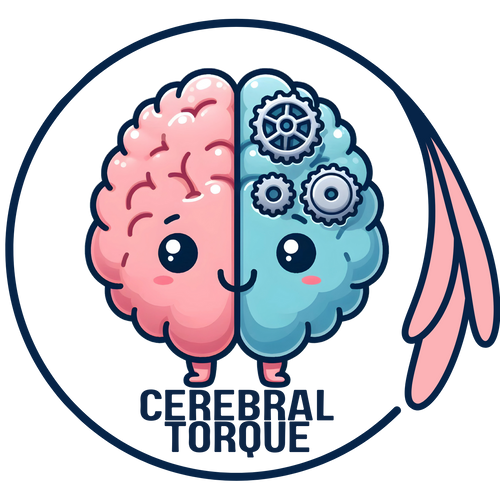Understanding Migraine Prodrome
Posted on September 04 2025,
Understanding Migraine Prodrome
What is Migraine Prodrome?
Migraine isn't just about the headache phase. The attack begins hours or even days before the pain starts, with a collection of warning signs called the prodrome or premonitory phase. Understanding this early phase changes how we approach migraine treatment.
Defining the Prodrome Phase
The prodrome typically occurs hours to days before headache onset, distinguished from aura which usually appears 5-60 minutes before pain begins. This early warning system affects the majority of people with migraine and may hold the key to more effective treatment strategies (Lipton et al., 2025).
Recent qualitative research involving 20 participants with migraine has provided unprecedented insights into what people actually experience during this crucial phase. The findings found that prodromal symptoms are more complex and varied than previously understood, with participants reporting an average of 13 different symptoms during the prodrome phase (Lipton et al., 2025).
The Spectrum of Prodromal Symptoms
The research identified 36 unique prodromal symptoms, which shows the diversity of the migraine prodrome experience. These symptoms span multiple body systems and may impact daily functioning even before the headache begins.
Most Common Prodromal Symptoms
Based on qualitative interviews with 20 participants, these are the symptoms most frequently reported during the prodrome phase.
| Symptom Category | Specific Symptoms | Frequency | Timing Before Headache | Key Insights |
|---|---|---|---|---|
| Autonomic Symptoms |
Nausea Most common prodromal symptom, experienced by 85% of participants Average timing: 0.8 hours before headache onset |
85% | Close to onset | Most common but confidence varies - may overlap with other conditions |
| General Symptoms |
Fatigue/Tiredness Second most common symptom, affecting daily energy levels Average timing: 4.0 hours before headache onset |
80% | Moderate delay | Common but less specific - can have multiple causes |
| Sensory Hypersensitivity |
Sensitivity to Light Strong predictor of coming migraine, highly confidence-inducing Average timing: 1.0 hour before headache onset |
82% | Near onset | Strongest single predictor - patients consistently recognize this as migraine warning |
| Pain/Pressure |
Neck Pain/Stiffness Highest bothersome rating (8.9/10), often the first warning sign Average timing: 4.8 hours before headache onset |
63% | Longer delay | Often the first symptom noticed, creates consistent pattern recognition |
| Vestibular |
Dizziness/Vertigo/Light-headedness High confidence predictor for migraine onset Average timing: 2.0 hours before headache onset |
75% | Moderate delay | High reliability when experienced, often described as "feeling like getting up too fast" |
| Cognitive |
Difficulty Thinking/Brain Fog Difficulty Concentrating Distinct but related cognitive symptoms affecting mental clarity Combined affect 60% of participants |
60% | Variable timing | When present, highly predictive but varies between individuals |
| Additional Sensory |
|
35-71% | Variable | Sudden temperature changes and severe sound sensitivity are strong warning signals |
| Emotional |
Irritability Often occurs without obvious reason, serving as warning sign Average timing: 2.5 hours before headache onset |
56% | Moderate delay | Particularly reliable when occurring "without obvious reason" |
The research identified symptoms across multiple domains, showing how migraine prodrome affects the entire body system:
The Multiple Symptom Effect
While individual symptoms may have varying predictive value, participants reported that experiencing multiple prodromal symptoms simultaneously or sequentially significantly increased their confidence that a migraine would follow. This suggests that symptom clusters may be more reliable predictors than isolated symptoms (Lipton et al., 2025).
The confidence data reveals that certain symptoms serve as more reliable warning signals than others. Sensory hypersensitivity symptoms, especially light sensitivity, are the strongest predictors, while more general symptoms like fatigue show greater variability in predictive value.
The Critical Window: Symptom Timing Patterns
Understanding when prodromal symptoms occur relative to headache onset is important for both prediction and treatment. The research revealed distinct timing patterns that could guide therapeutic interventions.
Key Timing Findings
Most prodromal symptoms (72%) occurred between 1 to 6 hours before headache onset, creating a potentially valuable treatment window. Nearly 40% of all symptoms occurred within 2 hours of headache start, while some symptoms appeared as early as 8-9 hours beforehand (Lipton et al., 2025).
These symptoms provide the longest advance notice and may represent the earliest detectable changes in migraine pathophysiology. Sensitivity to smell (8.5 hours average), loss of appetite (9.1 hours), and changes in bowel movements (6.5 hours) fall into this category.
The majority of prodromal symptoms fall into this window, including fatigue/tiredness (4.0 hours), neck pain/stiffness (4.8 hours), and difficulty concentrating (4.9 hours). This represents the optimal treatment window for many patients.
Symptoms occurring close to headache onset often overlap with aura phase and include visual disturbances (0.3 hours), difficulty speaking (0.3 hours), and nausea (0.8 hours). These may signal immediate headache onset.
The timing variability suggests different underlying mechanisms may be responsible for various prodromal symptoms. Some symptoms may reflect early hypothalamic activation, while others could indicate trigeminal system sensitization closer to headache onset.
Predictive Confidence: How Reliable Are Prodromal Symptoms?
One of the most clinically relevant findings relates to how confident people feel that a migraine will follow specific prodromal symptoms. This confidence level is crucial for determining when and how to intervene therapeutically.
Confidence Levels by Symptom
Participant confidence ratings show which symptoms are most reliable for predicting incoming migraines.
| Symptom | High Confidence | Moderate Confidence | Low Confidence | Key Insights |
|---|---|---|---|---|
| Sensitivity to Light | 82% | 9% | 9% | Strongest single predictor - patients consistently recognize this as migraine warning |
| Dizziness/Vertigo | 75% | 13% | 13% | High reliability when experienced, often described as "feeling like getting up too fast" |
| Sensitivity to Temperature | 71% | 14% | 14% | Sudden temperature changes serve as strong warning signals |
| Difficulty Concentrating | 67% | 0% | 33% | When present, highly predictive but varies between individuals |
| Neck Pain/Stiffness | 63% | 13% | 25% | Often the first symptom noticed, creates consistent pattern recognition |
| Nausea | 60% | 13% | 27% | Most common but confidence varies - may overlap with other conditions |
| Irritability | 56% | 22% | 22% | Particularly reliable when occurring "without obvious reason" |
| Sensitivity to Sound | 50% | 33% | 17% | When severe, highly predictive of imminent migraine |
| Fatigue/Tiredness | 36% | 14% | 50% | Common but less specific - can have multiple causes |
Treatment During Prodrome: Current Practices and Effectiveness
The study found that many people already attempt to treat their migraine attacks during the prodromal phase, with varying degrees of success. These findings provide insights into current treatment patterns and highlight opportunities for improvement.
The most commonly used treatments during prodrome included triptans (45% of participants), over-the-counter pain relievers like ibuprofen and acetaminophen (25-15%), and preventive medications like propranolol and topiramate (15% each).
Among those who treat during prodrome, 69% reported taking medication at least half the time they experience prodromal symptoms. This suggests that many people have learned to recognize the value of early intervention.
Of participants who treat during prodrome, 63% reported that medication helps prevent or reduce migraine severity at least 50% of the time. However, 25% reported lower success rates, and 13% noted variable effectiveness.
Treatment Uncertainty
A significant finding was that 42% of participants felt unsure about when to take medication during the prodrome phase. This uncertainty is a major barrier to effective prodromal treatment and highlights the need for clearer clinical guidance (Lipton et al., 2025).
Willingness to Treat
Among the 20% of participants who don't currently treat during prodrome, 75% indicated they would be willing to take medication during this phase if it could reduce or prevent migraine attacks. This suggests significant untapped potential for prodromal treatment approaches.
Clinical Insights and Treatment Window
The research findings have important implications for clinical practice and future treatment development. Understanding the prodromal phase could fundamentally change how healthcare providers approach migraine management.
The identification of a 1-6 hour treatment window before headache onset represents a significant clinical opportunity. This timeframe is long enough to allow for medication absorption and onset of effect, but not so long that drugs would be metabolized before the headache begins.
The timing of this research is particularly relevant given recent clinical trial evidence. A 2023 study showed that ubrogepant, when taken during the prodrome phase, significantly reduced the probability of headache development and decreased functional disability. This represents the first strong evidence for prodromal treatment efficacy (Dodick et al., 2023).
Clinical Practice Implications
- Patient Education: Healthcare providers should help patients identify and track their personal prodromal symptoms
- Treatment Timing: Clear guidance on when to initiate treatment during prodrome could improve outcomes
- Medication Selection: Different medications may be optimal for prodromal vs. headache phase treatment
- Personalized Approaches: Individual symptom patterns could guide personalized treatment strategies
"This study sets the stage for assessing the benefits of treating in the prodrome phase, when initial symptoms that signal impending headache develop. Identifying prodrome symptoms that reliably predict headache provides a foundation for treating during prodrome" (Lipton et al., 2025).
This article is for educational purposes and should not replace professional medical advice. Treatment decisions should always be made in consultation with qualified medical professionals who can assess individual circumstances and medical history.
References
- Lipton RB, Stokes J, Evans CJ, et al. Characterizing the patient experience during the prodrome phase of migraine: A qualitative study of symptoms and their timing. Headache. 2025;00:1-14.
- Dodick DW, Goadsby PJ, Schwedt TJ, et al. Ubrogepant for the treatment of migraine attacks during the prodrome: a phase 3, multicentre, randomised, double-blind, placebo-controlled, crossover trial in the USA. Lancet. 2023;402:2307-2316.
- Eigenbrodt AK, Christensen RH, Ashina H, et al. Premonitory symptoms in migraine: a systematic review and meta-analysis of observational studies reporting prevalence or relative frequency. J Headache Pain. 2022;23:140.
- Giffin NJ, Ruggiero L, Lipton RB, et al. Premonitory symptoms in migraine: an electronic diary study. Neurology. 2003;60:935-940.
- International Headache Society. The International Classification of Headache Disorders, 3rd edition. Cephalalgia. 2018;38:1-211.
- Kelman L. The premonitory symptoms (Prodrome): a tertiary care study of 893 migraineurs. Headache. 2004;44:865-872.
- Laurell K, Artto V, Bendtsen L, et al. Premonitory symptoms in migraine: a cross-sectional study in 2714 persons. Cephalalgia. 2016;36:951-959.
- Peng KP, May A. Redefining migraine phases—a suggestion based on clinical, physiological, and functional imaging evidence. Cephalalgia. 2020;40:866-870.
Mon, Nov 17, 25
Migraine Research - During the week of my absence.
Migraine Research - During the week of my absence. The Association Between Insomnia and Migraine Disability and Quality of Life This study examined how insomnia severity relates to migraine disability...
Read MoreSat, Nov 01, 25
Anti-CGRP Monoclonal Antibody Migraine Treatment: Super-Responders and Absolute Responders and When to Expect Results
Anti-CGRP monoclonal antibodies achieved 70% super-response and 23% complete migraine freedom in a one-year study. Most dramatic improvements occurred after 6 months of treatment. For patients with chronic or high-frequency...
Read MoreAll Non-Invasive Neuromodulation Devices for Migraine Treatment
Wondering if migraine devices actually work? This guide breaks down the latest evidence on non-invasive neuromodulation devices like Cefaly, Nerivio, and gammaCore. Learn which devices have solid research backing them,...
Read More



